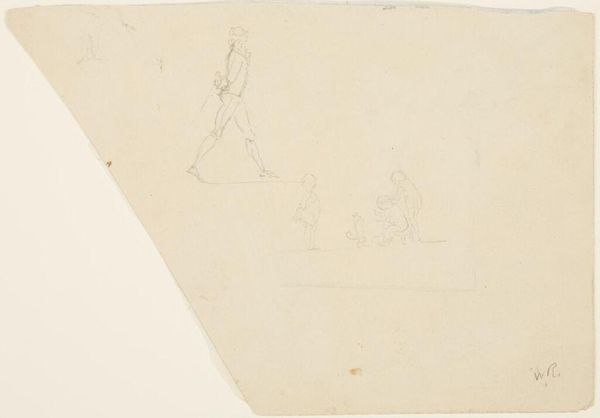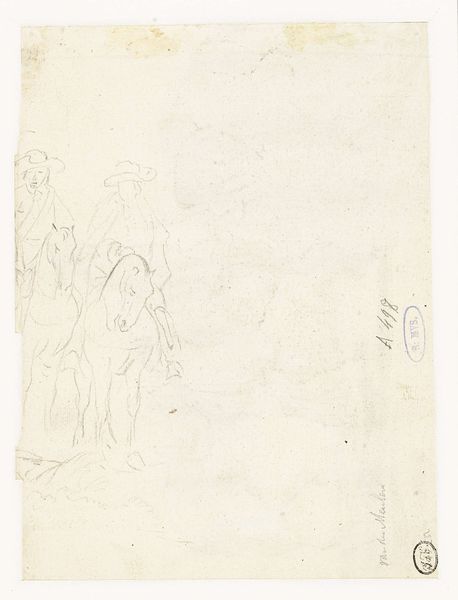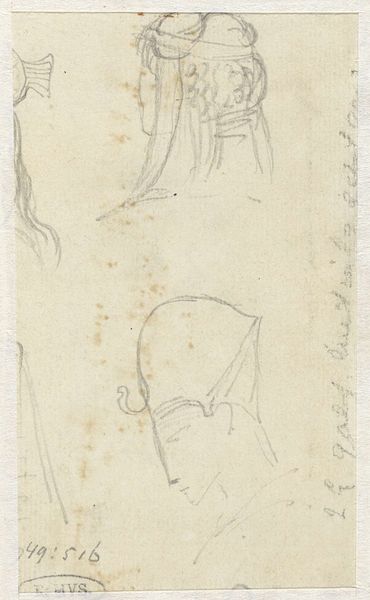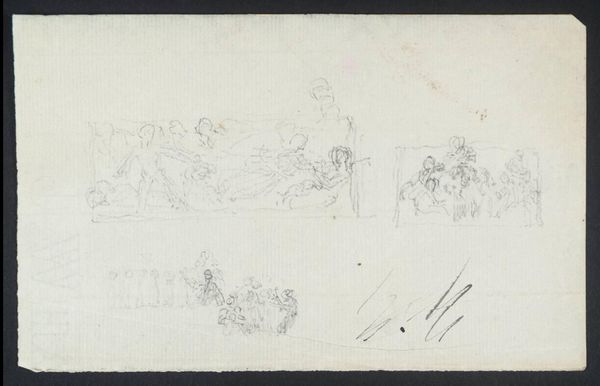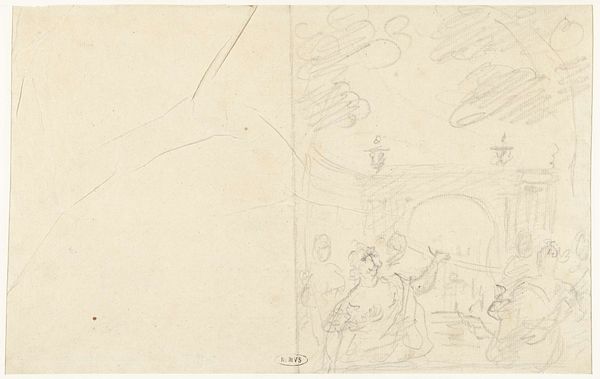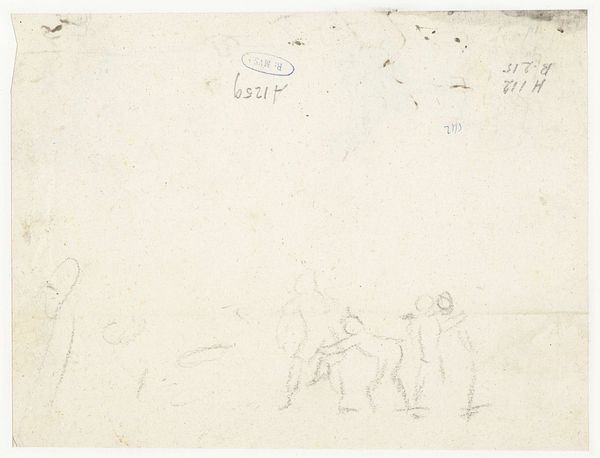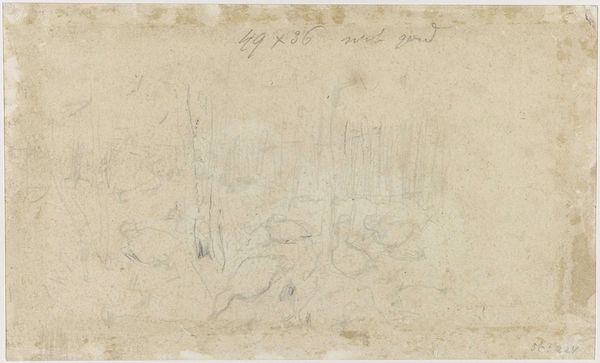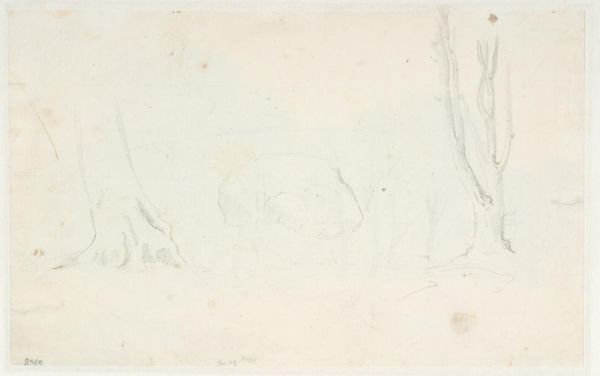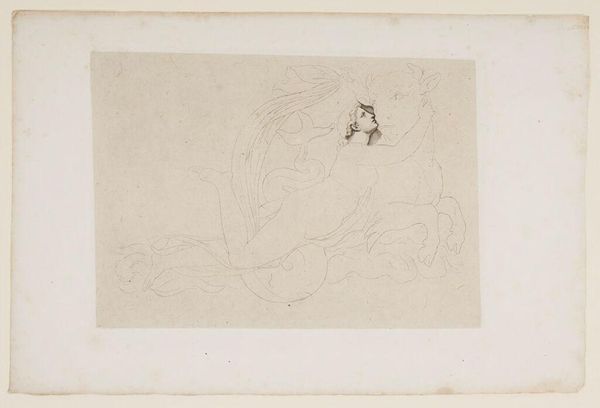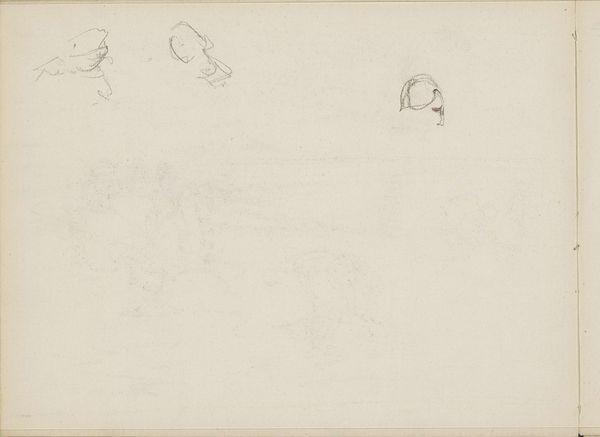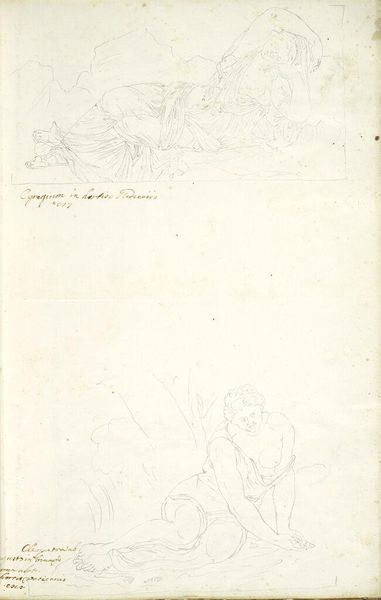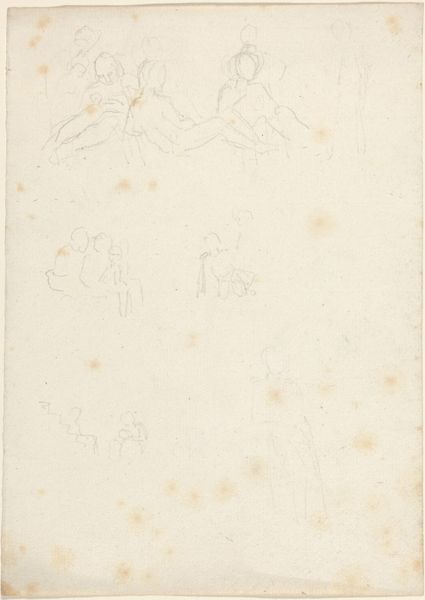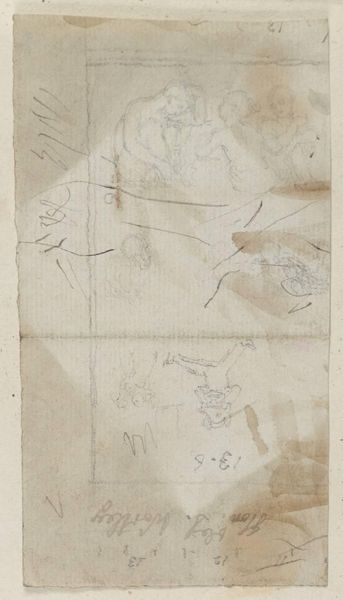
drawing, paper, ink
#
portrait
#
drawing
#
baroque
#
figuration
#
paper
#
ink
#
ink drawing experimentation
#
miniature
Dimensions: height 218 mm, width 127 mm
Copyright: Rijks Museum: Open Domain
Jacob de Wit created this pen and brown ink drawing, Buste op piedestal met drie putti, in the first half of the 18th century. De Wit was a Dutch artist known for his ceiling paintings and use of mythological figures. Here, three putti, or cherubic figures, frolic around a pedestal as if in a garden. De Wit’s use of putti places the work within a tradition of allegorical representation where the cherubs embody innocence and divine love. In the context of 18th-century Europe, images of putti could evoke the era’s social and cultural values centered on family, religion, and morality. These cherubic figures were often deployed to endorse societal ideals, particularly those associated with domestic life and childhood innocence. The sketch provides a glimpse into the artist’s process and the artistic conventions of his time, as well as the emotional and social landscape that influenced his work.
Comments
No comments
Be the first to comment and join the conversation on the ultimate creative platform.
